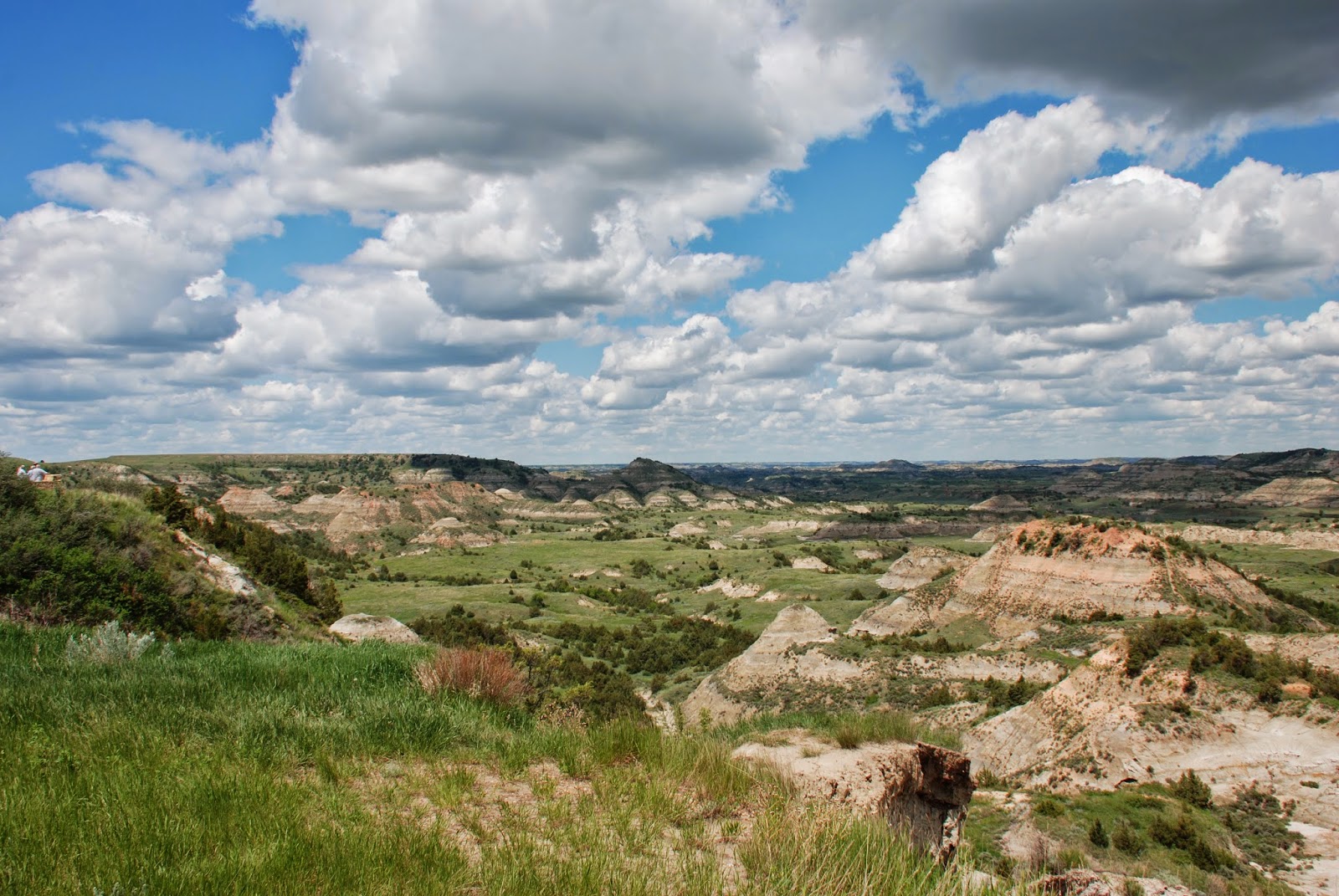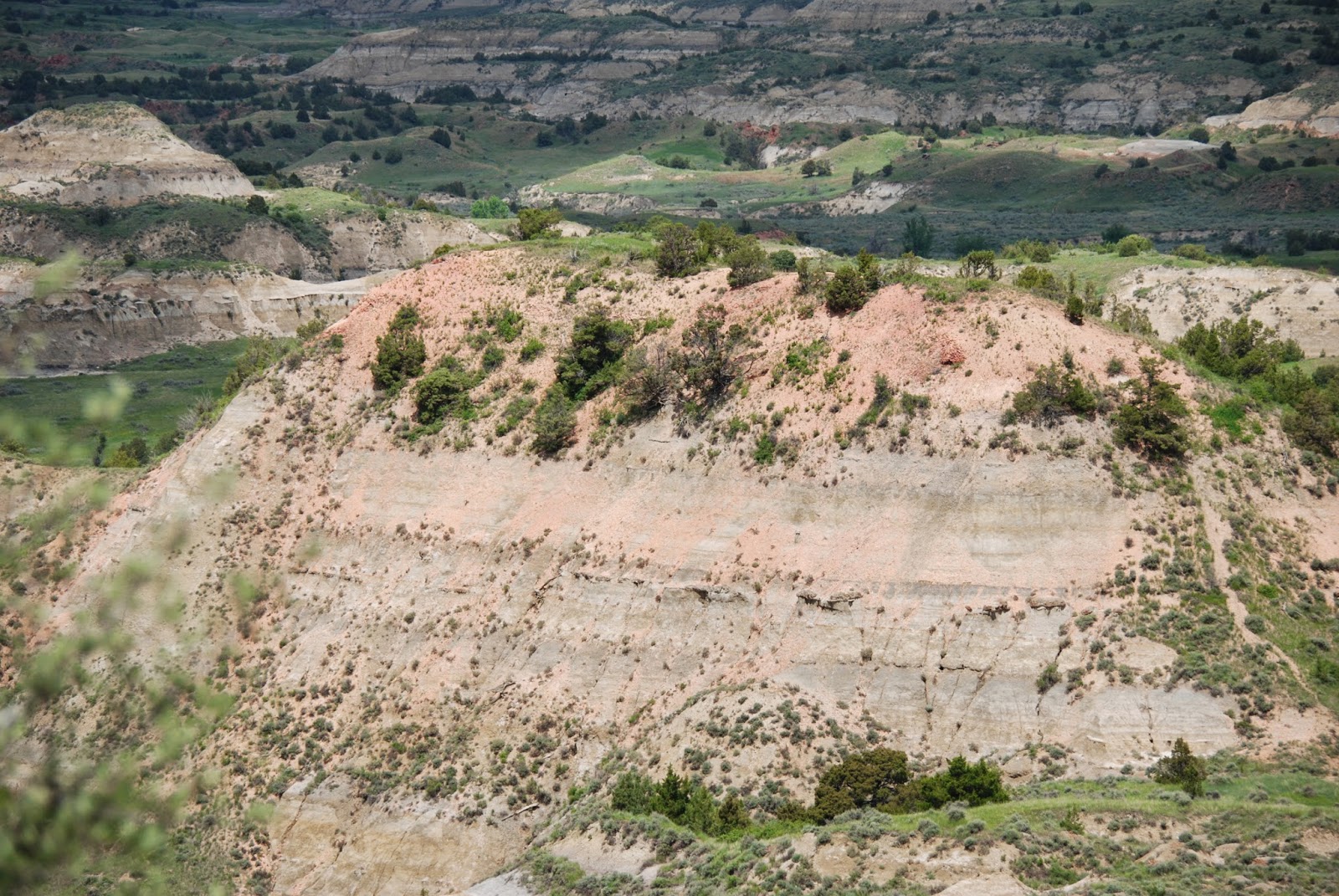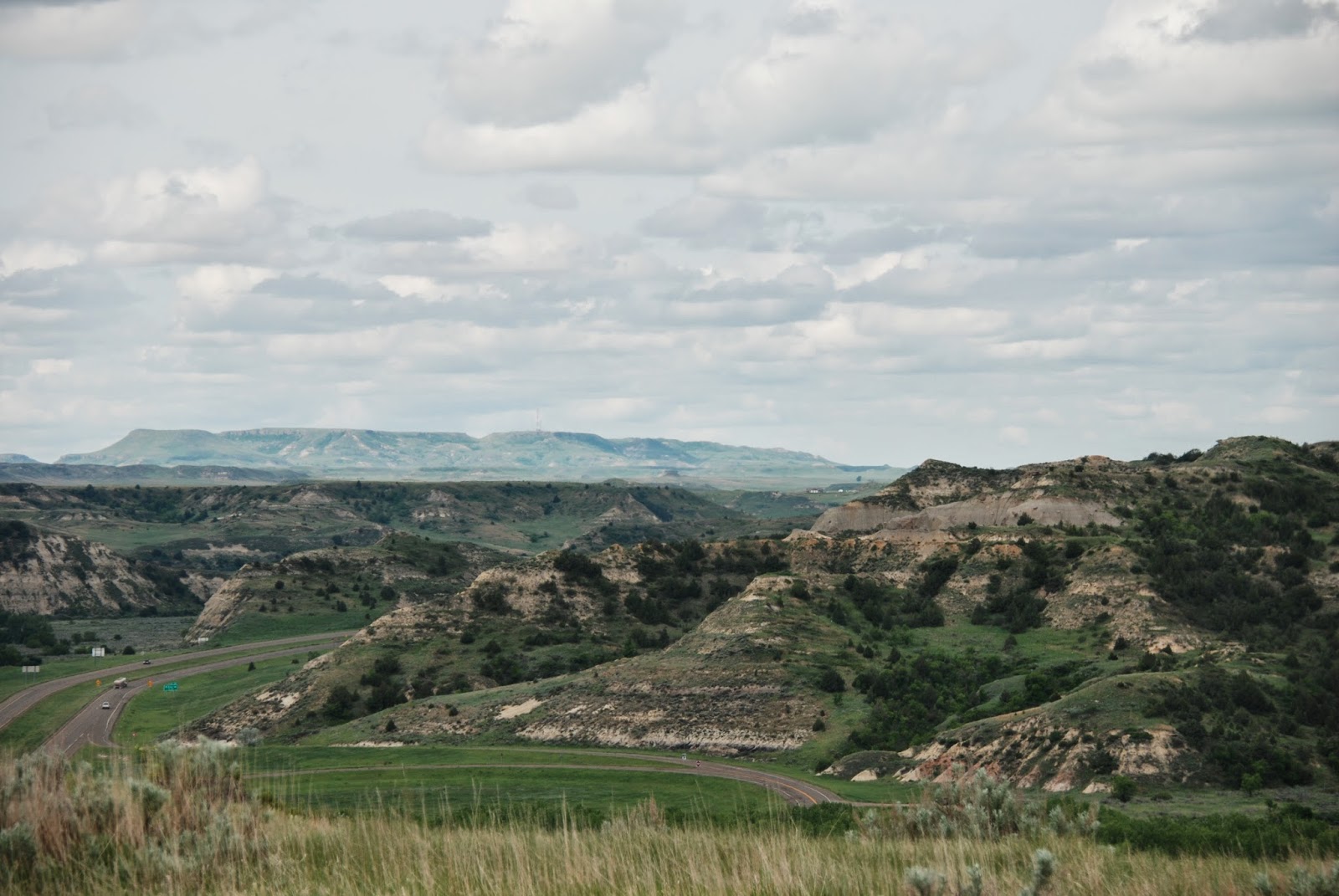The Badlands
They are Breathtaking.
I'll let you simply enjoy the pictures!
A lone Bison
Our friends enjoying the view as well
Theodore Roosevelt National Park
Theodore Roosevelt National Park is a United States National Park comprising three geographically separated areas of badlands in western North Dakota. The park was named for U.S. President Theodore Roosevelt. The park covers 110 square miles (285 km2) of land in three sections: the North Unit, the South Unit, and the Elkhorn Ranch Unit.
The park's larger South Unit lies alongside Interstate 94 near Medora, North Dakota. The smaller North Unit is situated about 80 mi (130 km) north of the South Unit, on U.S. Highway 85, just south of Watford City, North Dakota. Roosevelt's Elkhorn Ranch is located between the North and South units, approximately 20 mi (32 km) west of US 85 and Fairfield, North Dakota. The Little Missouri River flows through all three units of the park. The Maah Daah Hey Trail connects all three units.
Roosevelt first came to the North Dakota badlands to hunt bison in September 1883. During that first short trip, he got his bison and fell in love with the rugged lifestyle and the "perfect freedom" of the West. He invested $14,000 in the Maltese Cross Ranch, which was already being managed by Sylvane Ferris and Bill Merrifield seven miles south of Medora. That winter, Ferris and Merrifield built the Maltese Cross Cabin. After the death of both his wife and mother on February 14, 1884, Teddy Roosevelt returned to his North Dakota ranch seeking solitude and time to heal. That summer, he started his second ranch, the Elkhorn Ranch, 35 miles north of Medora, which he hired two Maine woodsmen, Bill Sewall and Wilmot Dow, to operate. Teddy Roosevelt took great interest in his ranches and in hunting in the West, detailing his experiences in pieces published in eastern newspapers and magazines. He wrote three major works on his life in the West: "Ranch Life and the Hunting Trail," "Hunting Trips of a Ranchman," and "The Wilderness Hunter." His adventures in "the strenuous life" outdoors and the loss of his cattle in the starvation winter in 1886-1887 were influential in Theodore Roosevelt's pursuit of conservation policies as President of the United States (1901–1909).
Wild horses atop the hill!
Prairie Dog colonies were all over the park.
A flock of wild turkeys.
Bison were very abundant!
As well as wild horses!
A stallion crossing the road in front of us.
He had attitude!
These horses were beautiful!
WHAT A VIEW WASHING THE RV!
PITCHFORK FONDUE FOR DINNER!
The nationally acclaimed Pitchfork Steak Fondue where every evening chefs load steaks onto pitchforks and fondue them western style while overlooking the picturesque Badlands from atop a bluff at the Tjaden Terrace. Following the dinner we went to the western melodies performed live by members of The Coal Diggers from the Medora Musical.
A Beef Lovers Delight!
The view for our dinner was spectacular!
The Medora Musical is a regularly performed musical production near the town of Medora, North Dakota. It is presented in the Burning Hills Amphitheatre starting at 7:30 p.m. MDT nightly from June 7th-September 7th, 2013. The amphitheatre seats 2,853. The musical is a look back at the "Wild West" days of the region and includes references to Theodore Roosevelt (who spent time in western North Dakota).
The Burning Hills Amphitheatre was built in 1958 one mile west of Medora, for the production of "Ol’ Four Eyes". That production was also about Roosevelt. The musical was planned to help celebrate Roosevelt's 100th birthday. The amphitheatre was carved out of the side of the badlands in Burning Gulch by local volunteers, cast members and boys from the Home on the Range Ranch. The original theater seated between 1,000, and 1,200 people. It was constructed of wooden benches on the hillside with rustic buildings that formed a set around the stage. The natural acoustics of the hillside meant that no sound system would be needed.
"Ol’ Four Eyes" ran until 1963 when it was cancelled by the producer. It was replaced by "Teddy Roosevelt Rides Again" for the 1963 and 1964 seasons. In 1965 the amphitheatre was bought by former North Dakota businessman Harold Schafer. He started the Medora Musical with the help of a Sheehan Productions associate, Fred Smith. The Medora Musical was originally called "Teddy Roosevelt Rides Again; A Medora Musical," but the name was too long. In 1986, the Theodore Roosevelt Medora Foundation (TRMF) was started by Schafer to help fund the community and the musical. In 1991, the amphitheatre received a $4.1 million facelift which added additional seating, a new stage, escalators, and a much needed wheelchair ramp. The new Burning Hills Amphitheatre was completed in 1992, and the new construction was completed in 1997. In 2005 another renovation was made to the sets and the stage.

Wind Canyon.
Where the wind traveling through the canyon
has carved the soft sand stone.
Below are various picture's I took of the flowers in the park
Enjoy!




Ranch used by Teddy Roosevelt.

How many people knew
that Theodore Roosevelt was shot!
So Long
until the next posting!







































































No comments:
Post a Comment